NaNoTeaMo, Day 27: “A Different Dark Tea on Black Friday”
As I’m writing this, it’s the night of Black Friday. To most tea people with a pun gland, though, it’s Black Tea Friday. So, in honor of that, will I be talking about another unique black tea?

Forget it, I’m going to talk about dark tea, instead. That’s right, heicha! And not from China, either. This time? We’re going to look at a little known tea growing country called Laos.
Don’t tell me you’ve never heard of Laos. Ever watch The King and I? That’s Laos!

Well, Siam to the time period it was portraying and . . . y’know what? Bad example.
Point being, it’s the country right above Thailand, and many folks don’t know this, but they actually have tea trees there. Really old ones, too; some that are centuries old, even. And some enterprising folks are making puerh(-ish) things from them!
(Sidenote: Yes, I abide by the rule that it can’t be called puerh if it doesn’t hail from Yunnan province, China. For the rest of this article, I’m calling it “heicha”, which means “dark tea”. But if you’re reading this blog, you probably already knew that.)
I first learned of this development through Gary “Red Lodge Books & Tea” Robson’s tea blog. He rarely did reviews, but he covered this one cake from The Camellia Sinensis Tea House with all the thoroughness of a “happy massage”.
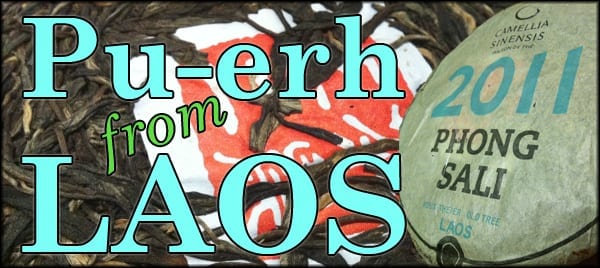
Yes, I was jealous. Why do you ask?
At World Tea Expo 2014, I visited the CSTH booth to see if they had any. They did not, which they lamented. I begged Gary for a sliver of his on a later visit. He lamented that he forgot.
Fast-forward to World Tea Expo 2015, Nicole Martin and I happened upon a booth for a company called Laos Tea. Now, see if you – fine readers – can wrap your brains around this. It was a company that sold Laotian-grown tea, it was run by Russians, and it was based in San Diego. A company . . . run by Russians . . . in San Diego . . . selling Laotian tea. My brain melts just thinking about it.
Two of the three samples I picked up from them were for their versions of sheng puerh. One was in a maocha (loose ) form, while the other was in a beengcha (caked tea) form. In other words, I had regular leaves to play with, and chiseled slivers from a heicha cake.
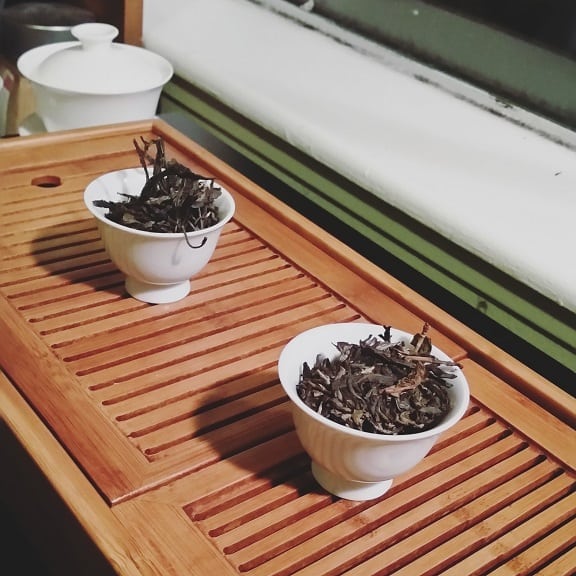
Both hailed from the village of Ban Payasi in Phongsaly (or Phong Sali) province.
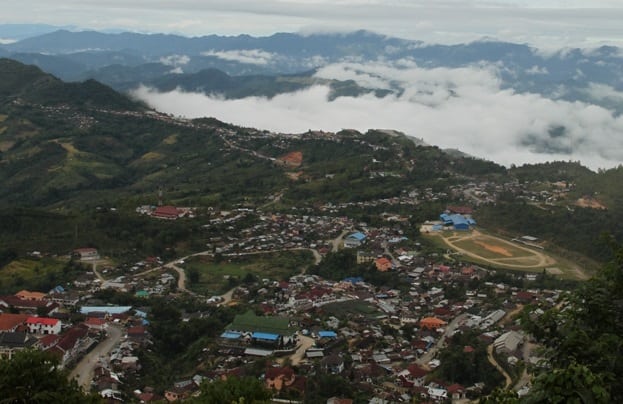
Yep, that’s right. The same place where good ol’ Gary got his cake. Pure win! Both were picked and processed in 2012. The loose sheng was prepared between the months of February and May, whereas the beeng form was harvested and compressed in March.
The loose heicha looked very much like puerh maocha would.
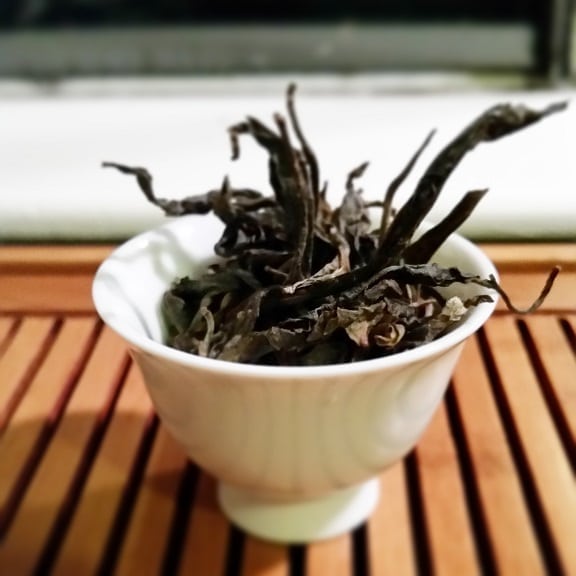
Long, spindly leaves – varying in color from green-beige to dark brown – were quite difficult to fit in a measuring cup. The smell they gave off was what one expected from a young-ish sheng. Aromatics of earth, tones of forest-grown shrubs and a mild, smoky/fruity something on the back-whiff were all present.
The caked version had a similar color palette, but similarities ended there.
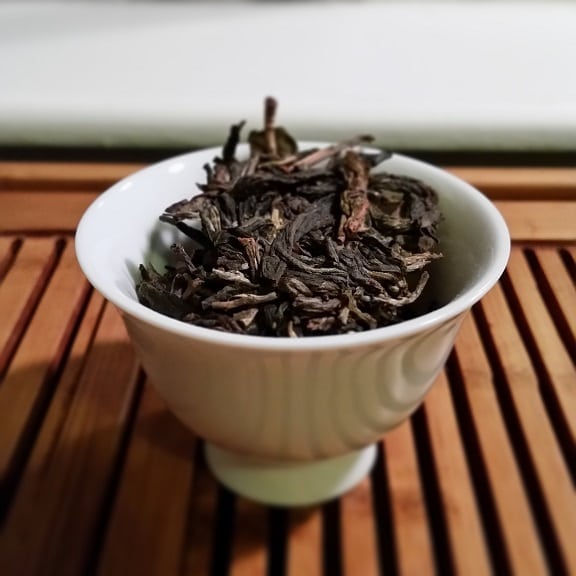
The aroma was younger, spryer and emanating more fruit tones. Grape, to be precise. I ran into a few Nan Nuos and Yiwus that had similar fragrances, but this was greener and a little spicier. And the leaves on appearance, of course, were far more compact.
For both of these, instead of gongfu-ing them – like I normally would for a sheng – I opted for something a little quicker. To get a more expedient side-by-side comparison, I opted to do both at a steep time of a minute. This way, I’d get all the nuances, and avoid getting overly caffeinated. I was brewing these at night after all. I measured out “about” a tablespoon of leaves for both, and put them each in their own gaiwans.
The loose sheng’s liquor colored to a light-to-medium bronze with an aroma of toasted dates carried along the steam. It was a shade lighter than most young shengs, but not as dark as some Hunan or Anhui heichas I’ve come across. As for taste, “Like whoah.”
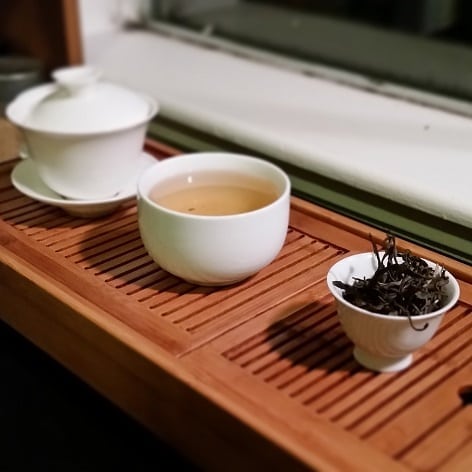
Let’s get the pleasantries out of the way, I liked it. A lot, even. But it certainly wasn’t like any Yunnan puerh in delivery. This was definitely a heicha of its own accord. There were notes of roasted pine, smoked grapes, peat moss, and a few other man-favorites in the sip. The finish was clean, quick and thorough, like a business handshake that didn’t linger to long or awkwardly.
The caked version brewed much darker than the loose, but that might’ve been because the tablespoon of leaves I added were much more compact. That said, it was straight into amber alert territory – a very bold amber. The aroma it gave off was slightly citrusy and really sweet, like a year-old Yiwu mountain-grown puerh.
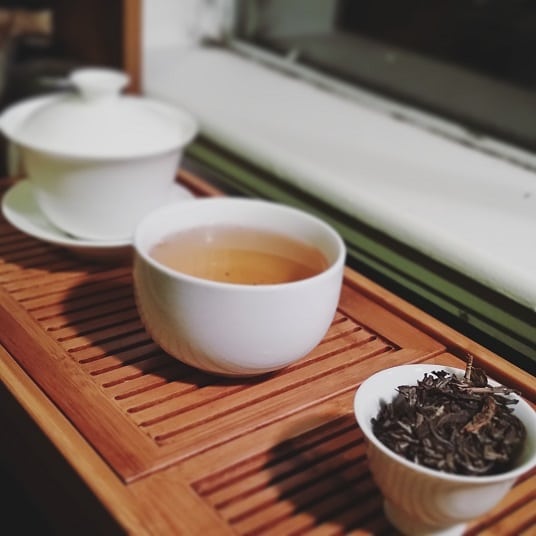
Not to downgrade my credibility or eloquence here, but, “Holy schiezenballs!”
This was note-for-note like a young Yunnan sheng puerh. The taste was grapy at the front, earthy in the middle, herbaceous towards the top, and possessed a slight tickle of bitterness on the back. While only a month-or-so apart from the loose form, this tasted years younger. Had I been tasting this blind, I don’t think I would’ve guessed the right year. I would’ve thought it was a 2014 cake at the oldest. The only thing that gave away some of its age was a little bit of a winy undertone, but that’s it.
To put it all succinctly, I wish I’d dipped into these sooner. But so worth the wait, regardless. Dark tea is the best way to spend a Black Friday as darkness falls.
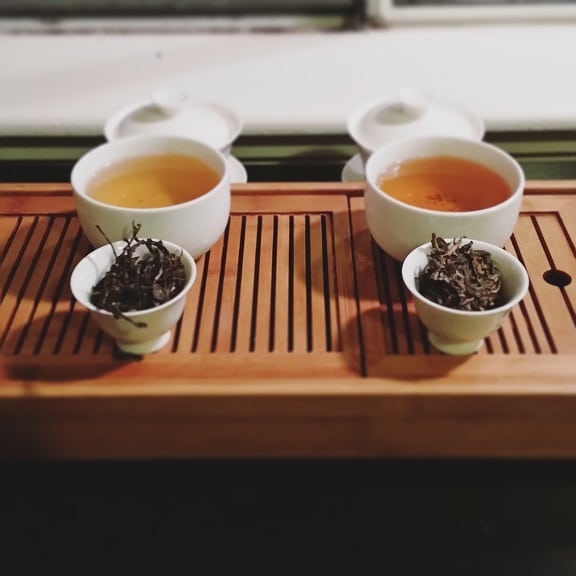
Leave a Reply to lazyliteratus Cancel reply